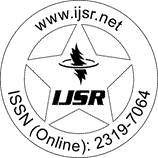Downloads: 125 | Views: 371
Research Paper | Geology | Iraq | Volume 6 Issue 1, January 2017 | Popularity: 6.4 / 10
Geological History of Shatt Al-Arab River, South of Iraq
Saif S. Al-Hamad, Badir N. Albadran, Jennifer R. Pournelle
Abstract: This study was carried out to give a picture of the geological history of the Shatt Al-Arab River. Four sites were chosen along the Shatt Al-Arab River course for sedimentological, mineralogical and faunal assemblages study. Two types of sediments texture are showed by grain size analysis which are, Silt and Sandy Silt. X-Ray diffraction analysis for minerals content showed that calcite, quartz, dolomite and feldspar are the dominated bulk minerals in the study area. Calcite is the most abundant mineral with averages of 51%, 38%, 44%, and 48% in site 1, 2, 3 and 4, respectively. Feldspar is the lowest mineral content with averages of 5%, 8%, 13%, and 7% in site 1, 2, 3 and 4, respectively. While Clay minerals analysis showed that Kaolinite, illite, chlorite, palygorskite, and mixed-layer of montmorillonite- chlorite are present in the study area. The mixed-layer of montmorillonite- chlorite are the most abundant mineral with averages of 59%, 53%, 52%, and 55% in sites 1, 2, 3 and 4, respectively, while palygorskite is the lowest mineral content with averages of 8%, 5%, 5%, and 9% in sites 1, 2, 3 and 4, respectively. The Fauna assemblages, ostracoda, foraminifera and mollusks suggested three biofacies in the study area. The first (BF1) reflects fresh marsh-fluvial environment. The second biofacies (BF2) reflects a shallow estuarine ? brackish marsh environment, while the third biofacies (BF3) reflects a lower estuarine ? marine environment. Site one is considered as a non-life facies which is also found in site four at depth (70- 320) cm. The environment was influenced by marine water which may indicated by the occurrence of Ammonia beccari, Cyprideis torosa, and Elphidum excavatum. The tectonic factor occurs by uplifted and subsidence subsurface structures. These adjustments can be recognized through the lithological column along the river stream. Also, Shatt Al-Arab River appears to have formed recently in the Earth's geologic time scale, through a comparison between lithofacies and biofacies of this study with previous C14 dating studies on the area, Shatt Al-Arab River probably have been formed during ( 2000- 1600) years before present.
Keywords: Shatt Al-Arab, river, sedimentology, mineralogy, biofacies and history
Edition: Volume 6 Issue 1, January 2017
Pages: 2029 - 2039
DOI: https://www.doi.org/10.21275/ART20164492
Please Disable the Pop-Up Blocker of Web Browser
Verification Code will appear in 2 Seconds ... Wait
